zum Warenkorb 0,00 €
0Nähanleitung /// How to sew: Halley
Das Hoodie-Kleid mit der perfekten Passform
Halley ist nicht das erste Hoodiekleid und sicher nicht das letzte. Aber wie bei allen Mondschnitten steht auch bei Halley eine perfekte Passform im Vordergrund. Brustabnäher und Rückenabnäher sorgen für einen guten Sitz. Der Schnitt enthält 2 Ärmelvarianten: einen schlichten Ärmel und einen weiten Statement-Ärme. Zudem kannst du zwischen Kapuze und Kragen wählen.
The Hoodie-Dress with a perfect fit
Halley isn’t the first hoodie dress and certainly won’t be the last. But as with all Mondstoff-patterns, Halley’s focus is on a perfect fit. Bust darts and back darts ensure a good fit. The pattern includes 2 sleeve variants – a simple sleeve and a wide statement sleeve. You can also choose between a hood and collar.
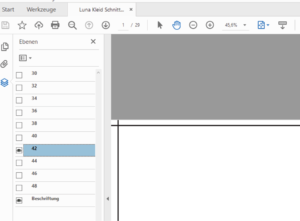
Richtige Größe drucken
Print the correct size
Maßtabelle /// Size chart (cm)

Stoffverbrauch für unsere Bordürenstoffe
Kleid mit Kapuze/Kragen + weiten Ärmeln: 2 m
Kleid mit Kapuze/Kragen und schmalen Ärmeln: 1,8 m
Pullover mit Kapuze/Kragen + weiten Ärmeln: 1,8 m
Pullover mit Kapuze/Kragen und schmalen Ärmeln: 1,4 m
Fabric requirement for our border fabrics
Dress with hood/collar + wide sleeves: 2 m
Dress with hood/collar and narrow sleeves: 1.8 m
Pullover with hood/collar + wide sleeves: 1.8 m
Pullover with hood/collar and narrow sleeves: 1.4 m
Stoffempfehlung
Für Halley eignen sich am besten Stoffe mit etwas Stand, wie unser Modal Frenchterry oder andere Frenchterrys und Sweatstoffe mit mindestens 5% Elasthananteil. Auch Viskosejerseys eignen sich, das Flächengewicht sollte allerdings mindestens 200g/qm betragen.
Fabric recommendation
Fabrics with a little body are best suited for Halley, such as our modal French terry or other French terry and sweat fabrics with at least 5% elastane. Viscose jerseys are also suitable, but the basis weight should be at least 200g/sqm.
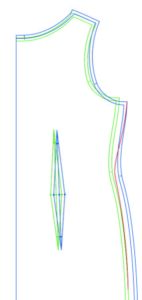
Anpassung
Für Halley ist das Brustmaß entscheidend. Wähle deine Größe anhand deines Brustumfanges aus und passe wenn nötig zur Hüfte hin an, sollten deine Maße sehr abweichen.
Wenn du den Schnitt anpassen musst, drucke nur die Größen, die du zum Verbinden benötigest. Zum Beispiel Brust 40, Hüfte 36.
Verwende die Ebenenfunktion und drucke nur 40 und 36 aus.
Die Größen werden dann mit einer Linie verbunden, im Beispielbild ist es die rote Linie. Verwende den Rückenabnäher, der deinem Taillenumfang entspricht.
Solltest du Hilfe benötigen, schau gern in der Mondstoff-Gruppe auf Facebook vorbei: Mondstoff-Gruppe
Adjustment
For Halley, the chest measurement is deciding. Choose your size based on your chest size and adjust to your hips if necessary if your measurements are very different.
If you need to adjust the pattern, you can only print the sizes you need to connect. For example, top chest 40, hips 36.
Use the layers function and only print out 40 and 36.
The sizes are then connected with a line, in the example image it is the red line. Use the back dart that corresponds to your waist measurement.
If you need help, feel free to join the Mondstoff group on Facebook: Mondstoff Group
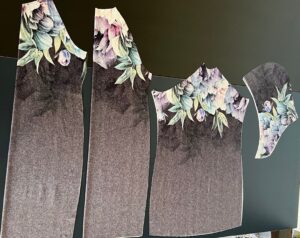
Zuschnitt
Cutting
1x front part on fold
1x back on fold
2x mirrored sleeves (choose wide or narrow sleeves)
4x hood mirrored or 2x collar mirrored
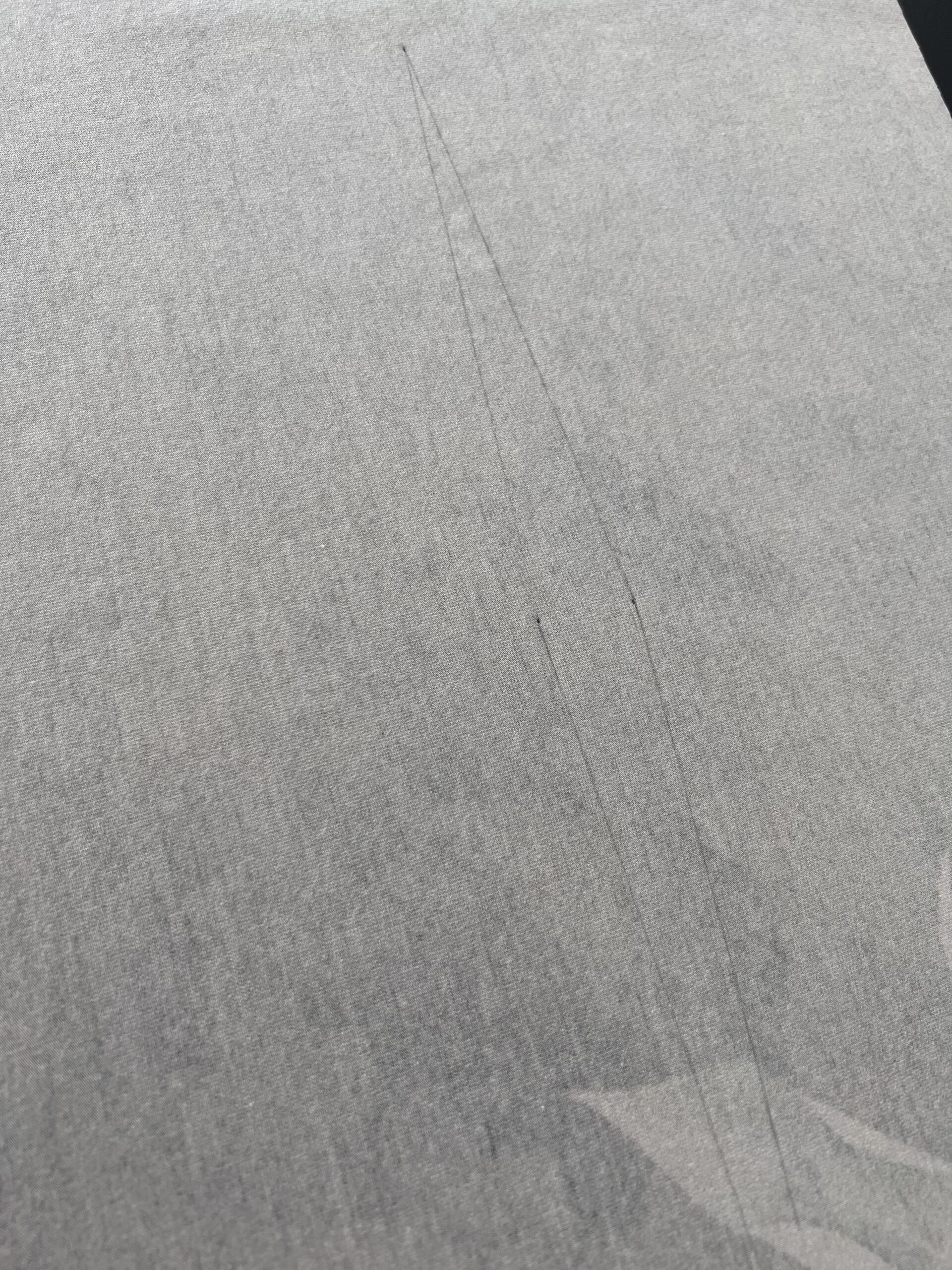
Passzeichen übertragen
Übertrage alle Passzeichen und Abnäher mit Hilfe eines Trickmarkers oder ähnlichem auf die linke Stoffseite.
Transfer the marks
Transfer all marks and darts to the wrong side of the fabric using a trick marker or something similar.
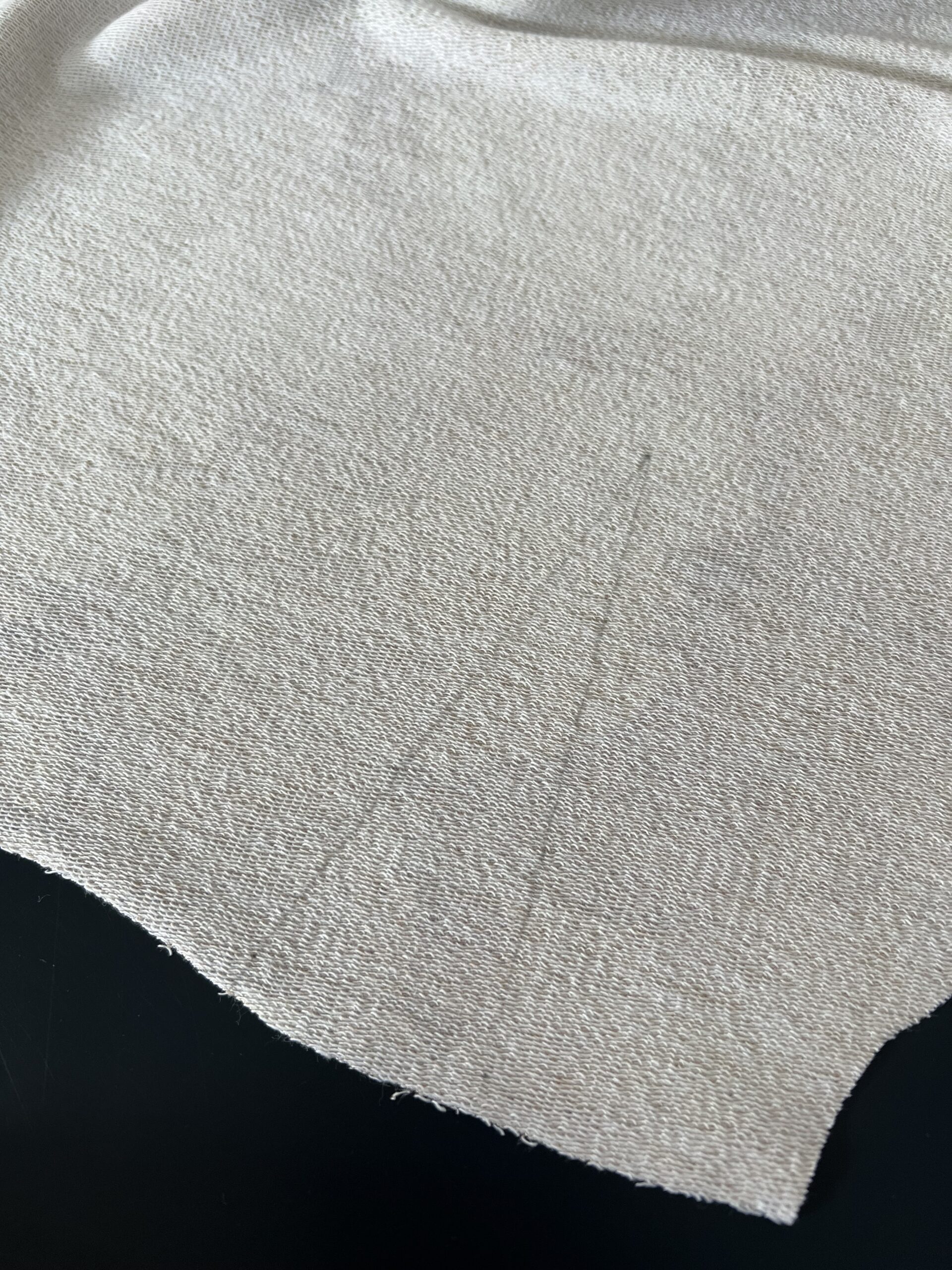
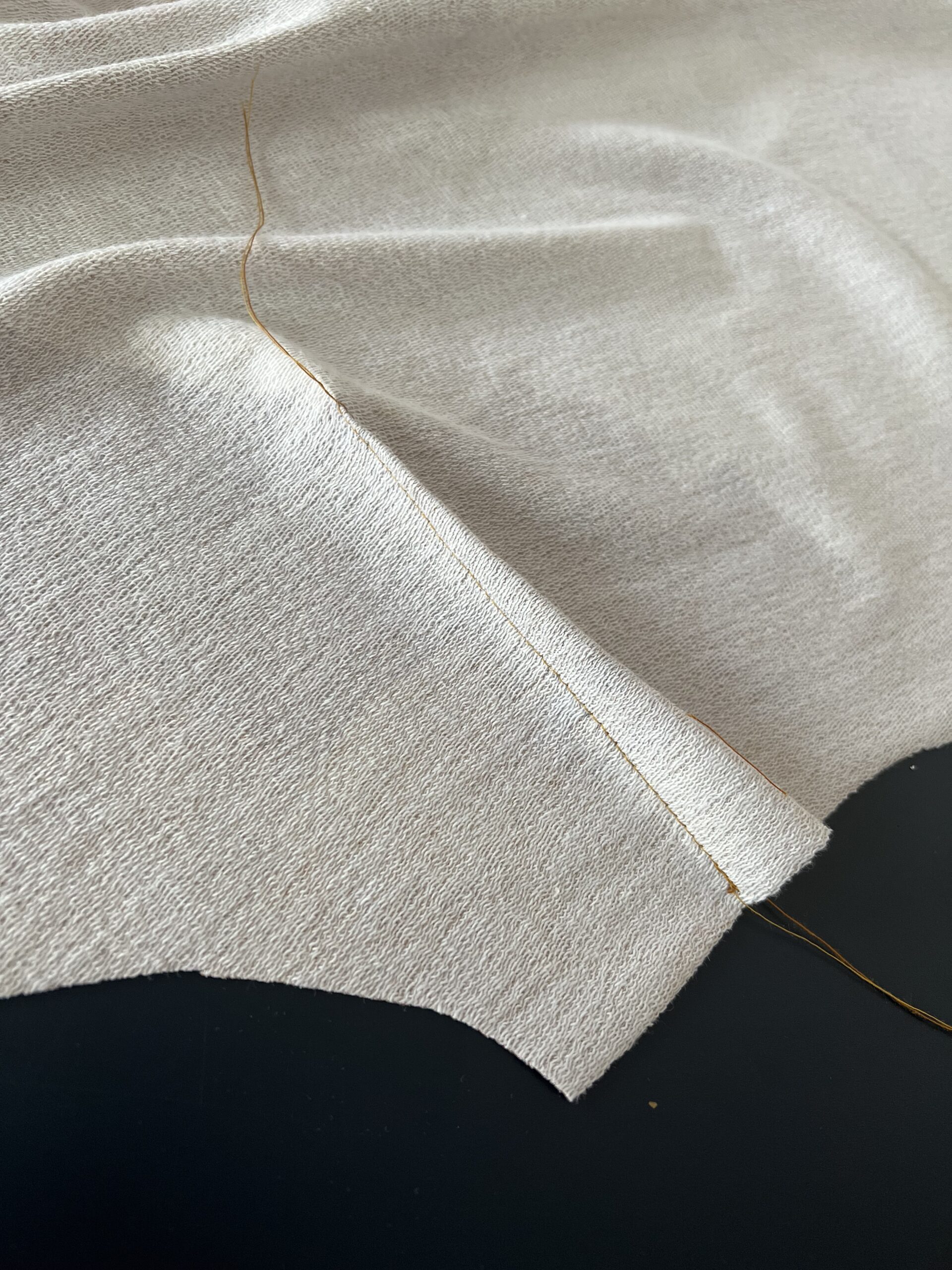
Brustabnäher schließen
Schließe am Vorderteil die Abnäher indem du von der Seite aus zur Brust mit einem kurzen Gradstich nähst. Verriegele das Ende der Naht nicht und verknote die Enden gründlich.
Closing the darts
Close the darts on the front by sewing from the side to the chest with a short straight stitch. Don´t lock at the end of the seam and knot the ends thoroughly.
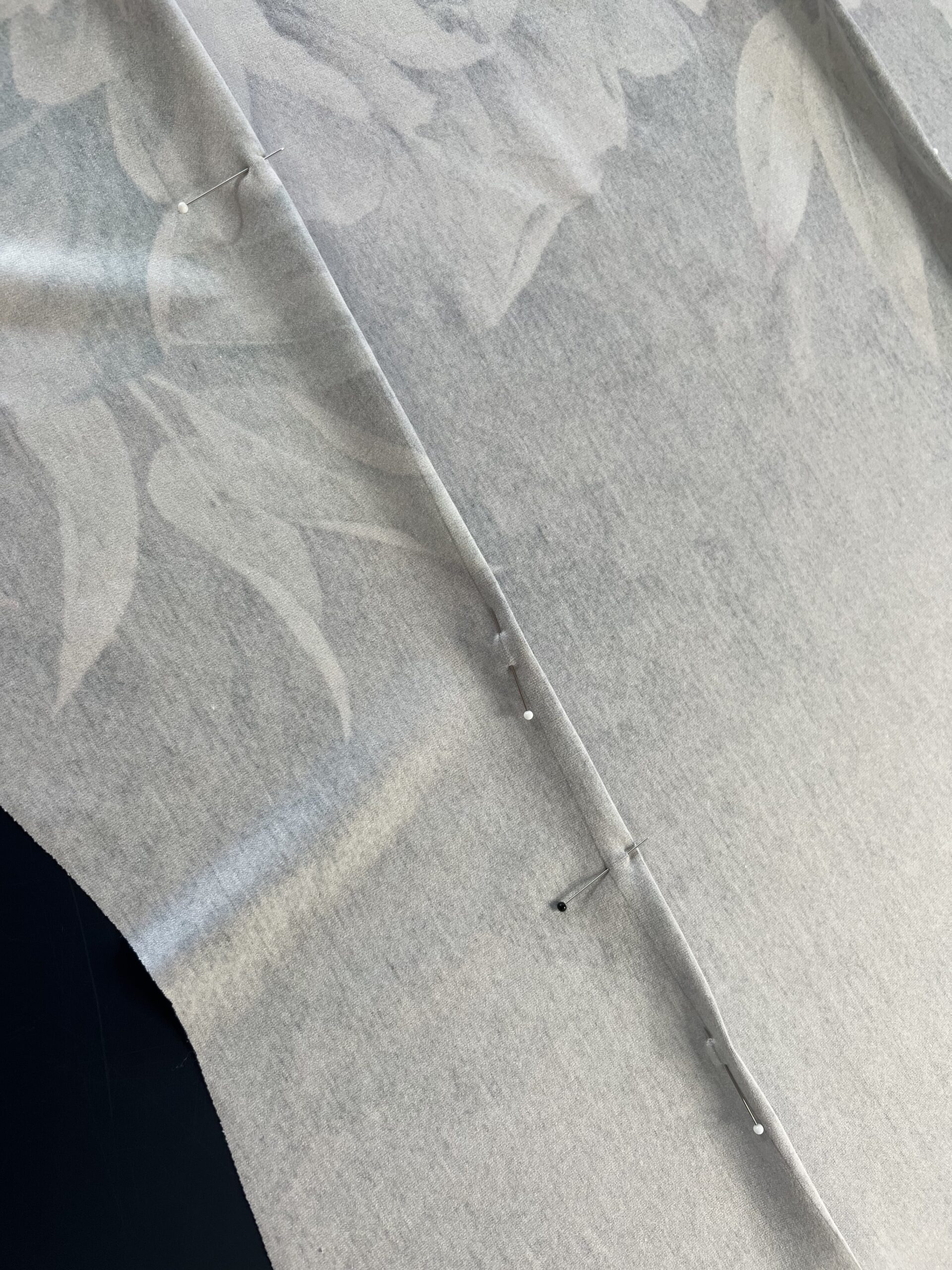
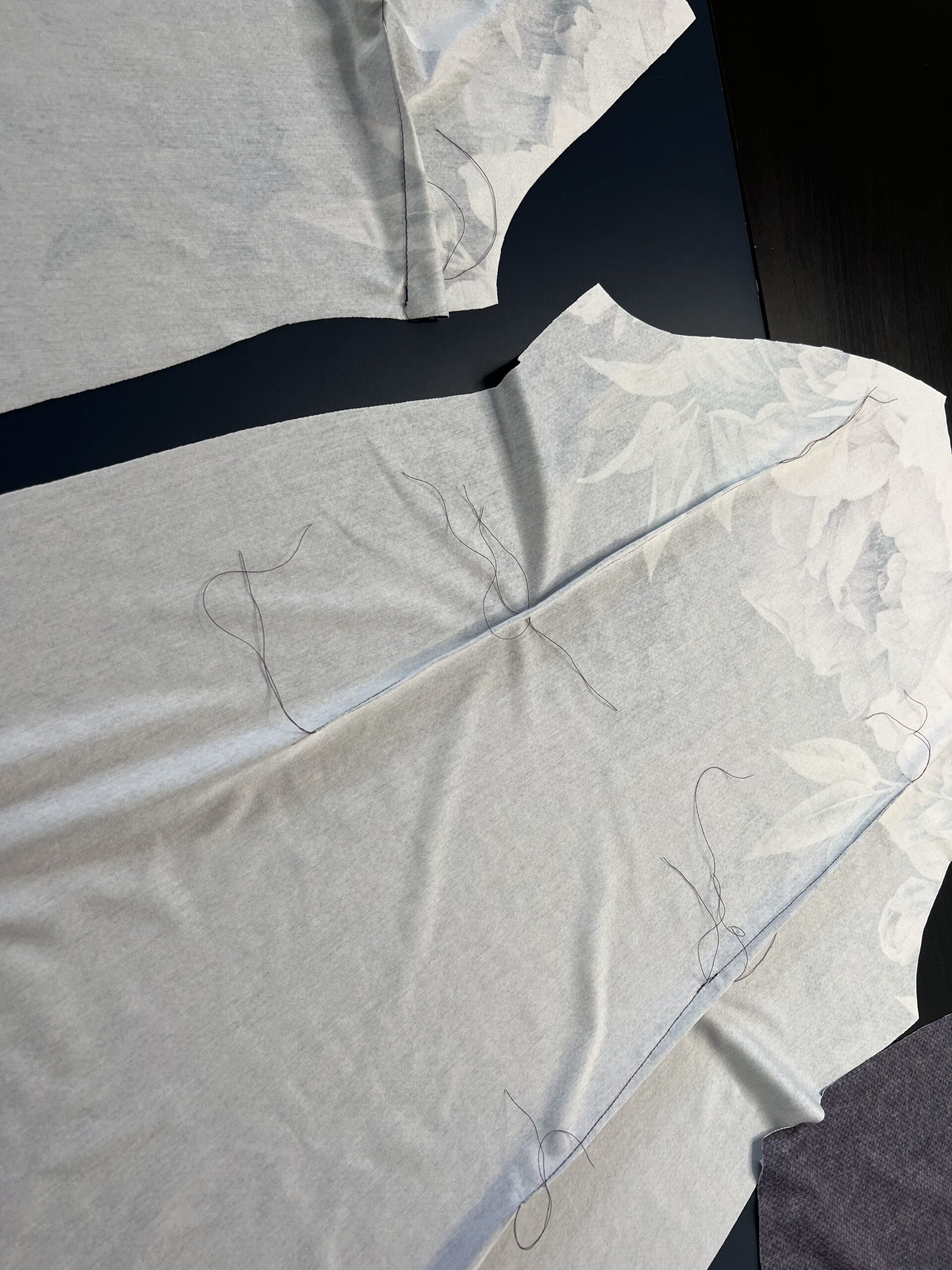
Abnäher am Rücken schließen
Der Abnäher am Rücken wird in 2 Schritten geschlossen: Beginne jeweils in der Mitte und nähe von hier aus mit einem kurzen Gradstich bis zur Spitze. Verriegele die Naht nicht, sondern verknote die Enden. Bügle die Abnäher in Richtung Rückenmitte.
Closing the back darts
The dart on the back is closed in 2 steps: start in the middle and sew from here with a short straight stitch to the tip. Don’t lock the seam, instead tie a knot at the ends. Iron the darts toward the center back.
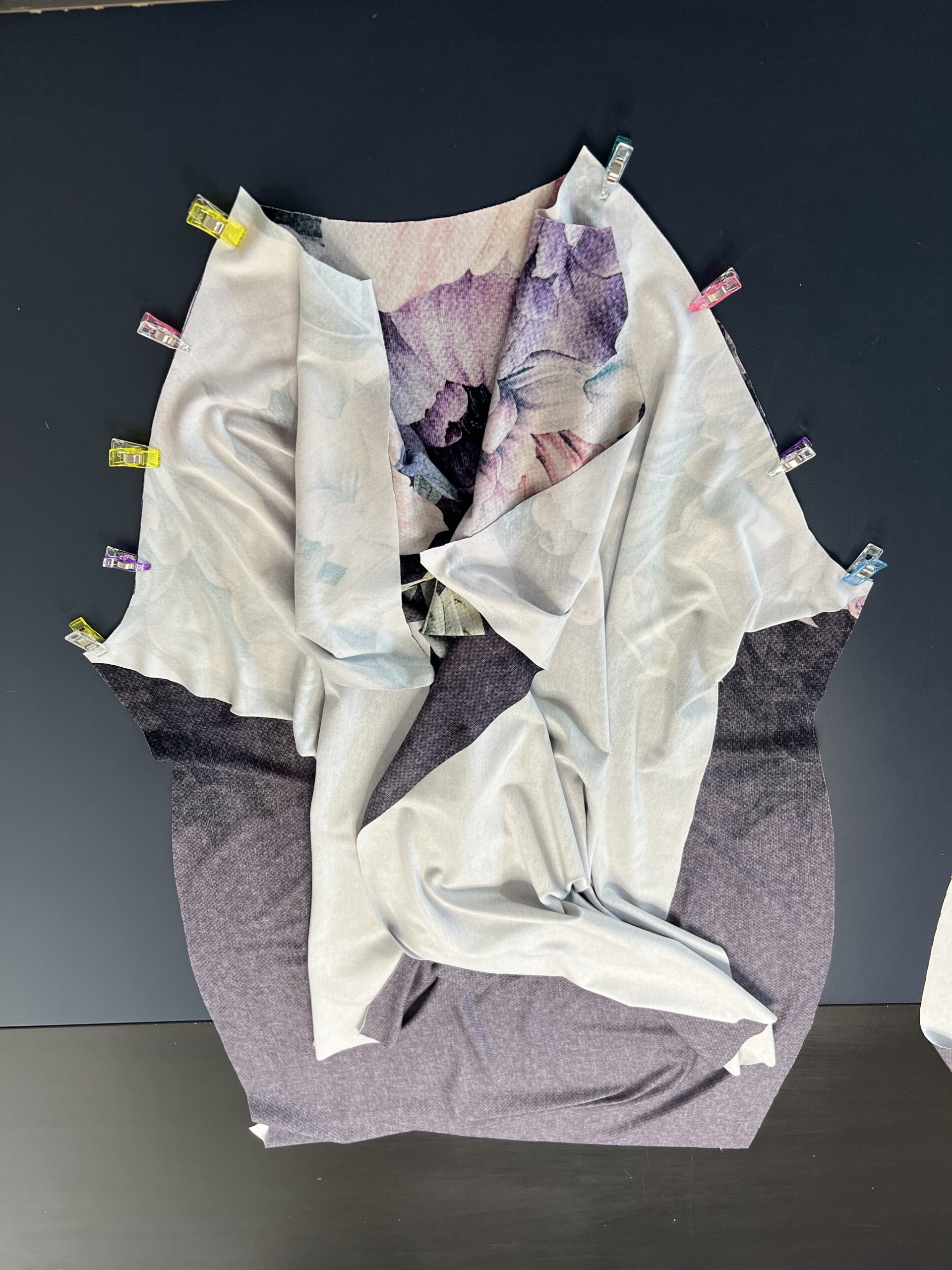
Raglanärmel annähen
Stecke die Ärmel jeweils rechts auf rechts an das Vorderteil und nähe sie mit einem elastischen Stich. Beachte die Markierungen für hinten und vorne. Lege dann das Rückteil jeweils rechts auf rechts auf die rückwärtige Ärmelnaht und nähe sie ebenfalls mit einem elastischen Stich.
Sewing the raglan sleeves
Pin the sleeves to the front piece, right sides together, and sew them with an elastic stitch. Note the markings for the back and the front. Then place the back piece, right sides together, on the back sleeve seam and sew it with an elastic stitch as well.
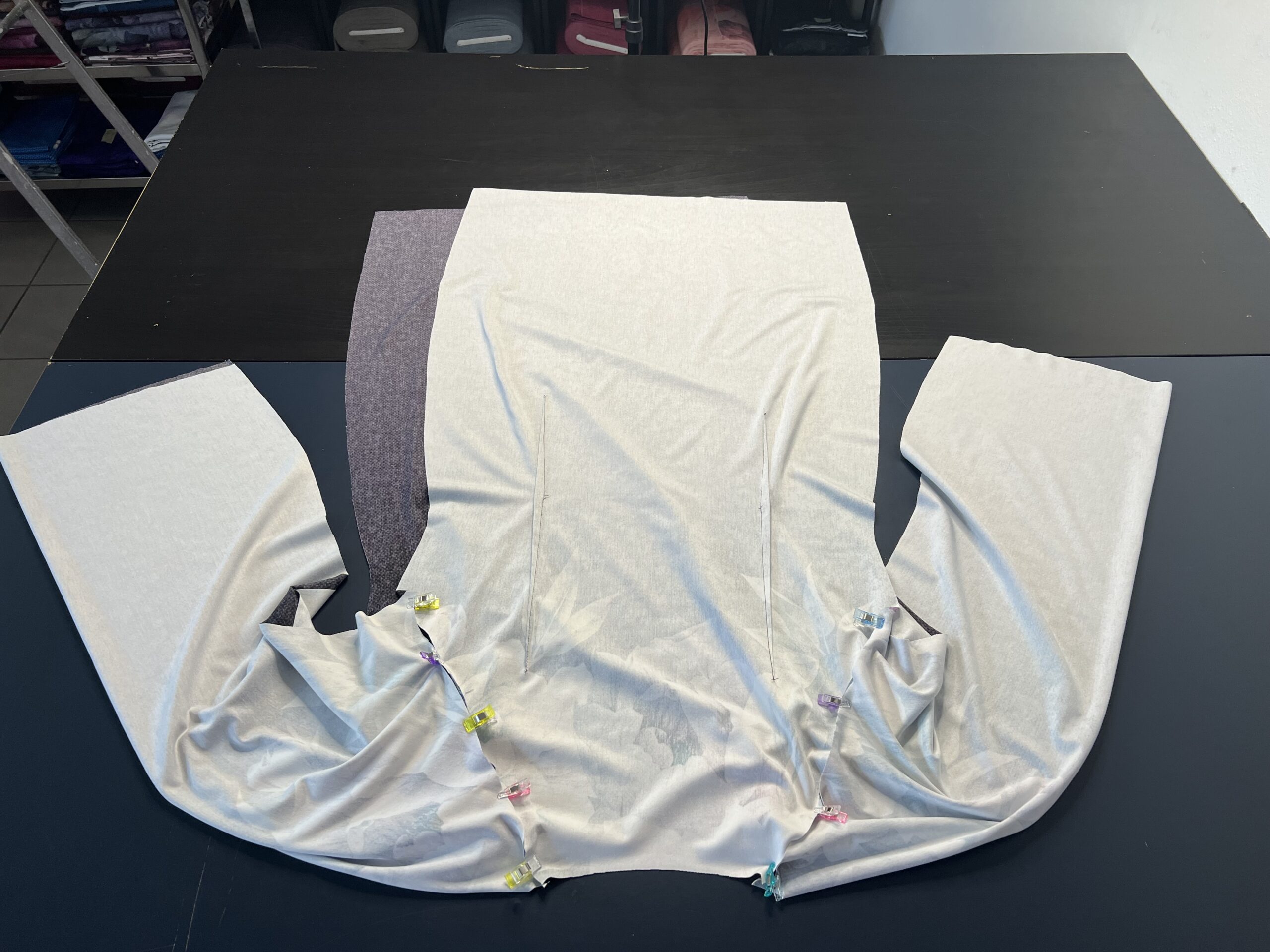
Seitennähte schließen
Schließe die Seitennähte in einem Rutsch.
Closing the side seams
Close the side seams in one go.
Option Kapuze /// Option Hood
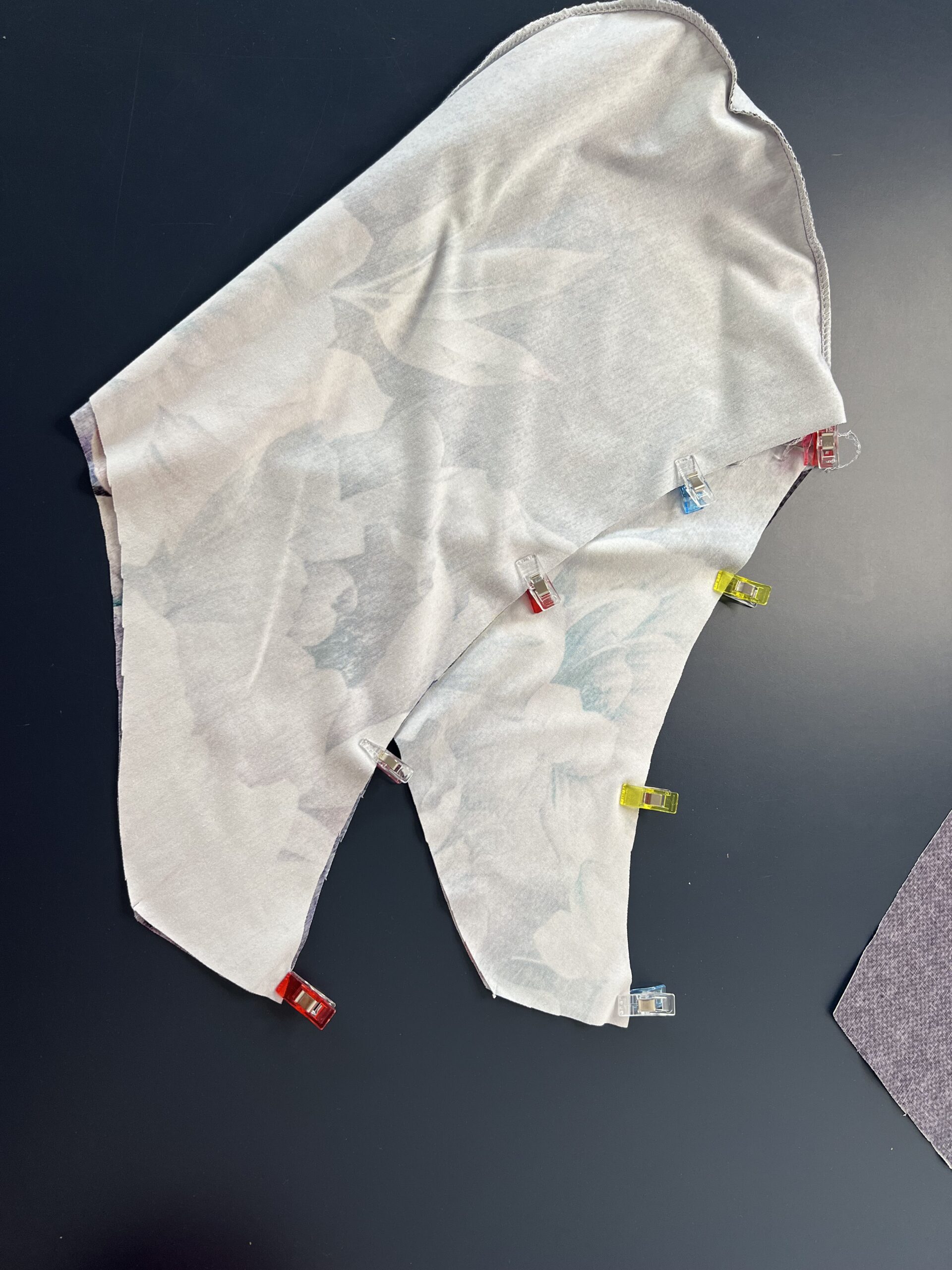
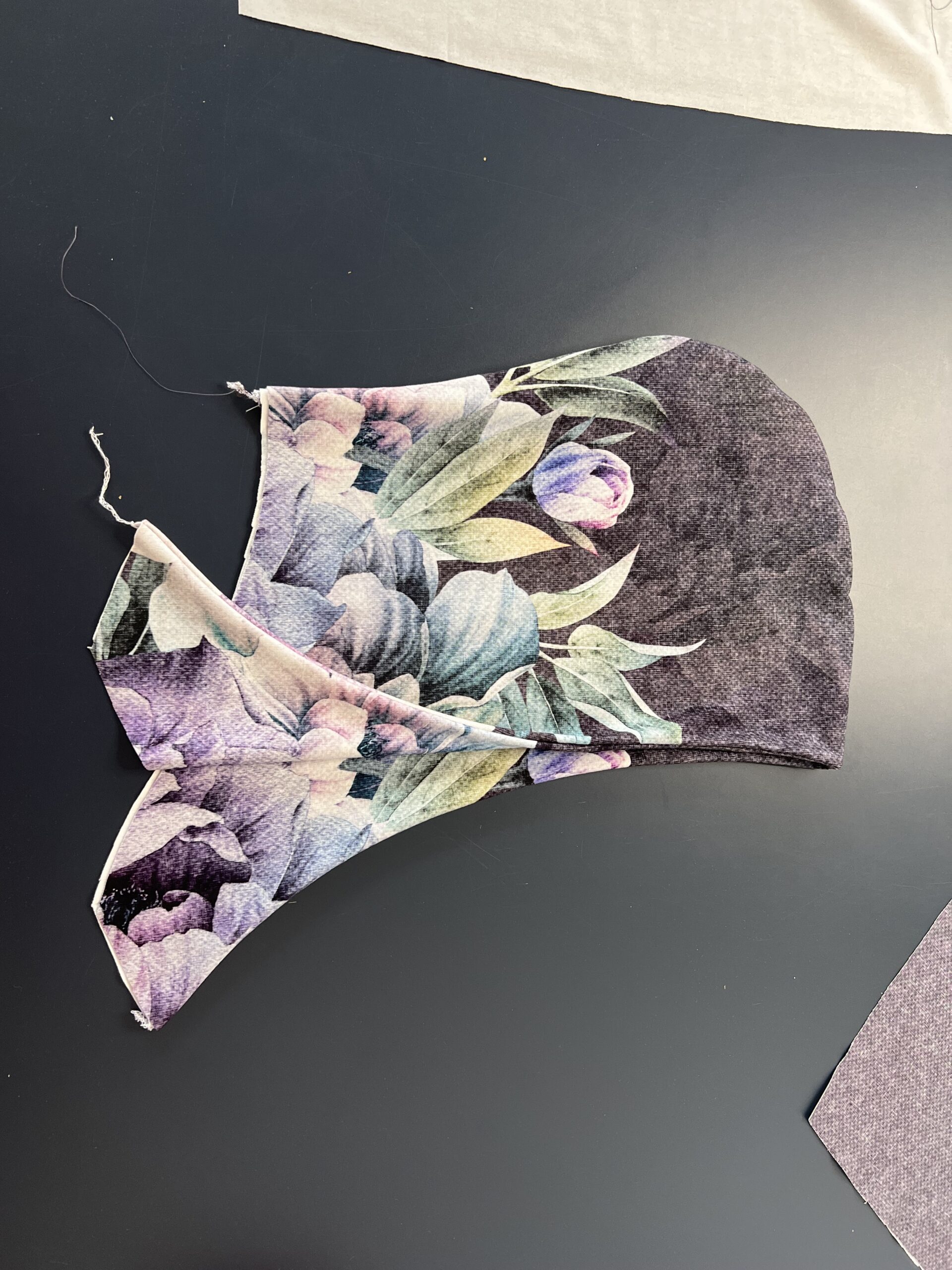
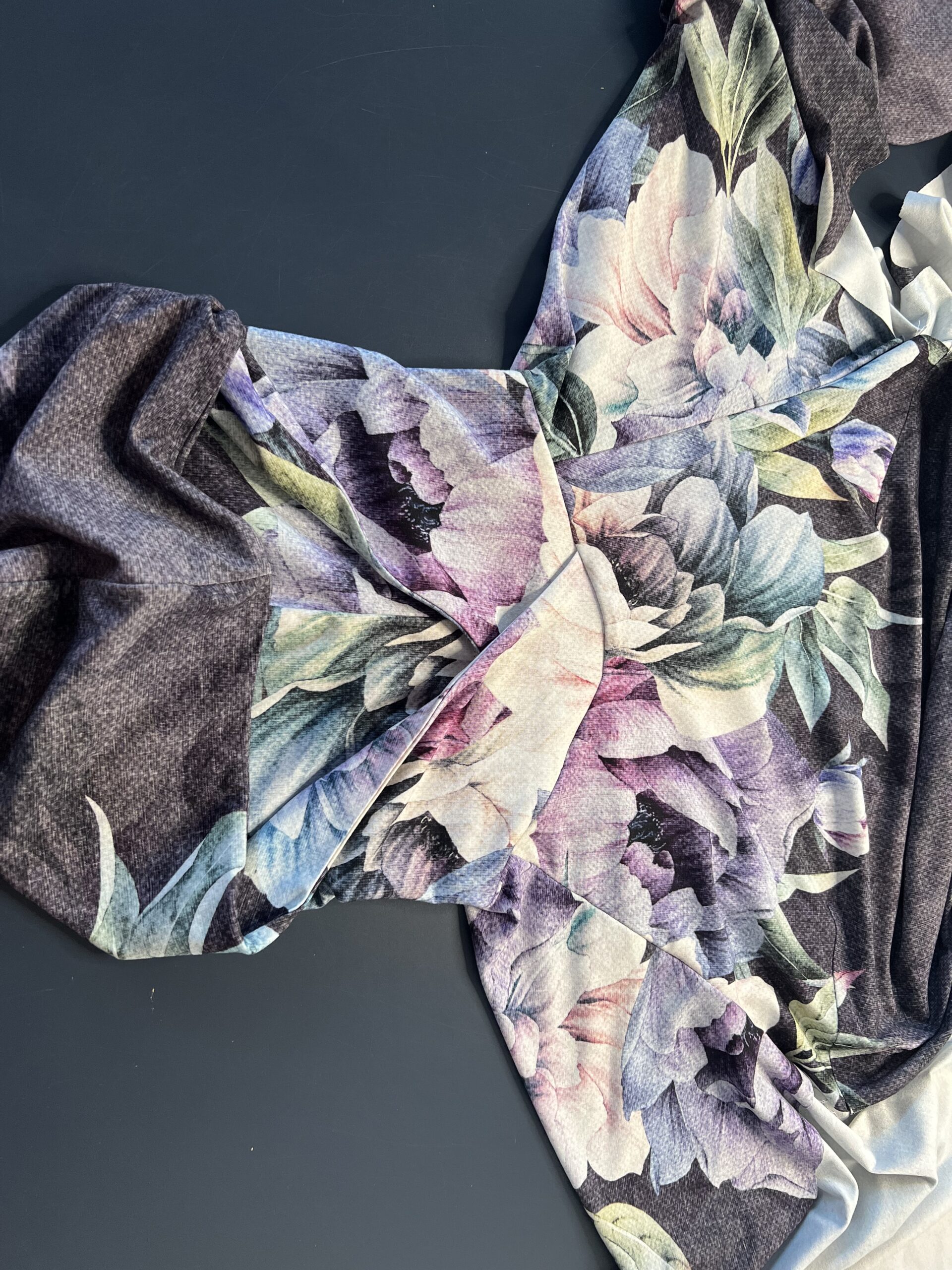
Kapuze nähen
Stecke jeweils 2 Kapuzenteile rechts auf rechts zusammen und nähe mit einem elastischen Stich. So entstehen eine Außen- und eine Futterkapuze. Bügle die Naht einmal gründlich, damit die Kapuze sich später schöner legt.
Stecke nun beide Kapuzen rechts auf rechts zusammen und schließe die Naht mit einem elastischen Stich. Wende die Kapuze, bügle sie gründlich und steppe sie optional knappkantig ab.
Die Kapuze überlappt an der vorderen Mitte. Orientiere dich an den Knipsen für die Überlappung und stecke die Kapuze rechts auf rechts an dein Kleid. Der Knips an der Kapuze trifft auf den Knips mittig des Raglanärmels. Nähe mit einem elastischen Stich.
Sewing the hood
Pin 2 hood pieces together right sides together and sew with an elastic stitch. This creates an outer and a lining hood. Iron the seam thoroughly once, so that the hood lays nicer later.
Now pin both hoods together right sides together and close the seam with an elastic stitch. Turn the hood over, iron it thoroughly and optionally topstitch it close to the edge.
The hood overlaps at the center front. Use the snaps as a guide for the overlap and pin the hood onto your dress, right sides together. The snap on the hood meets the snap in the middle of the raglan sleeve. Sew with an elastic stitch.
Option Kragen /// Option collar
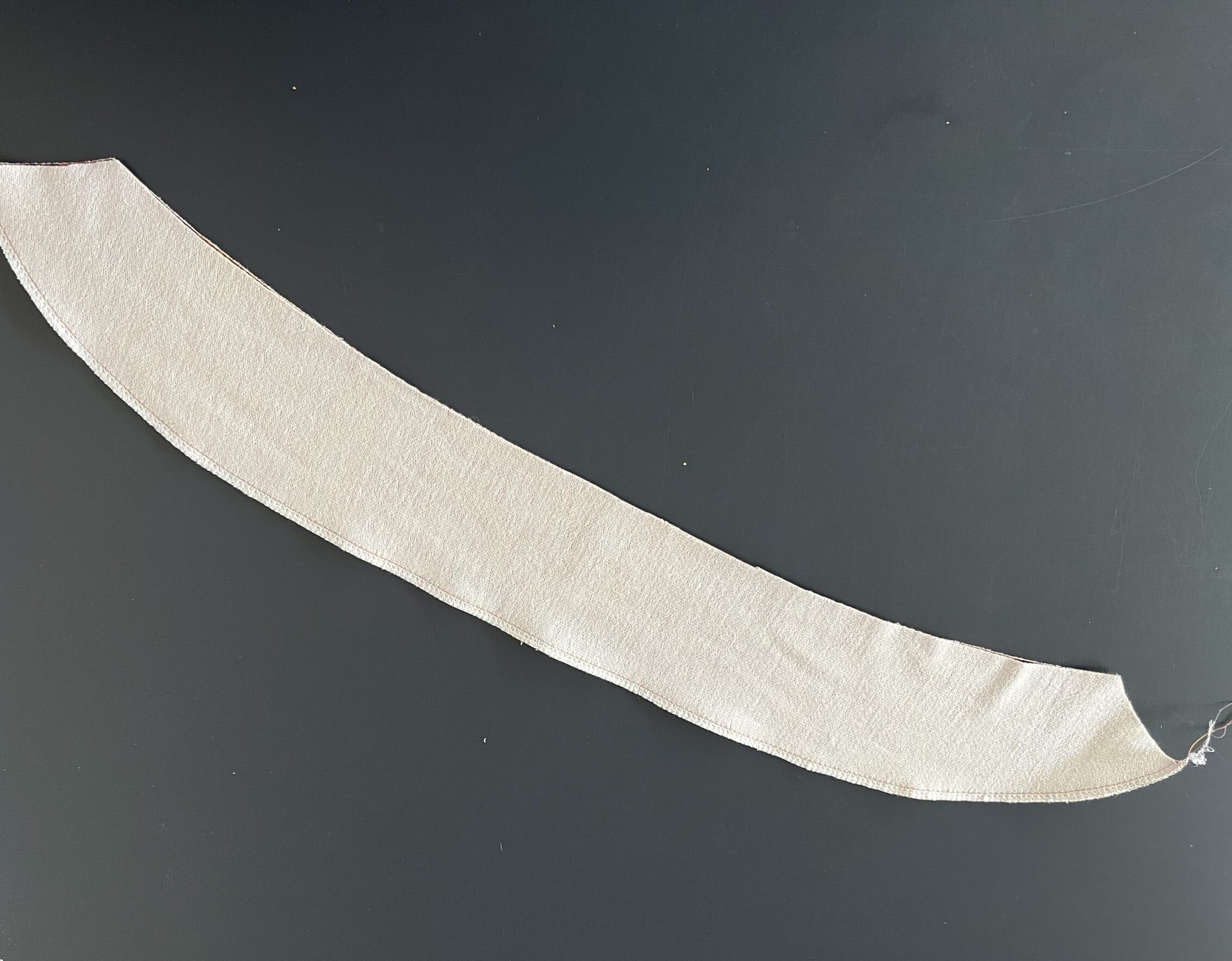
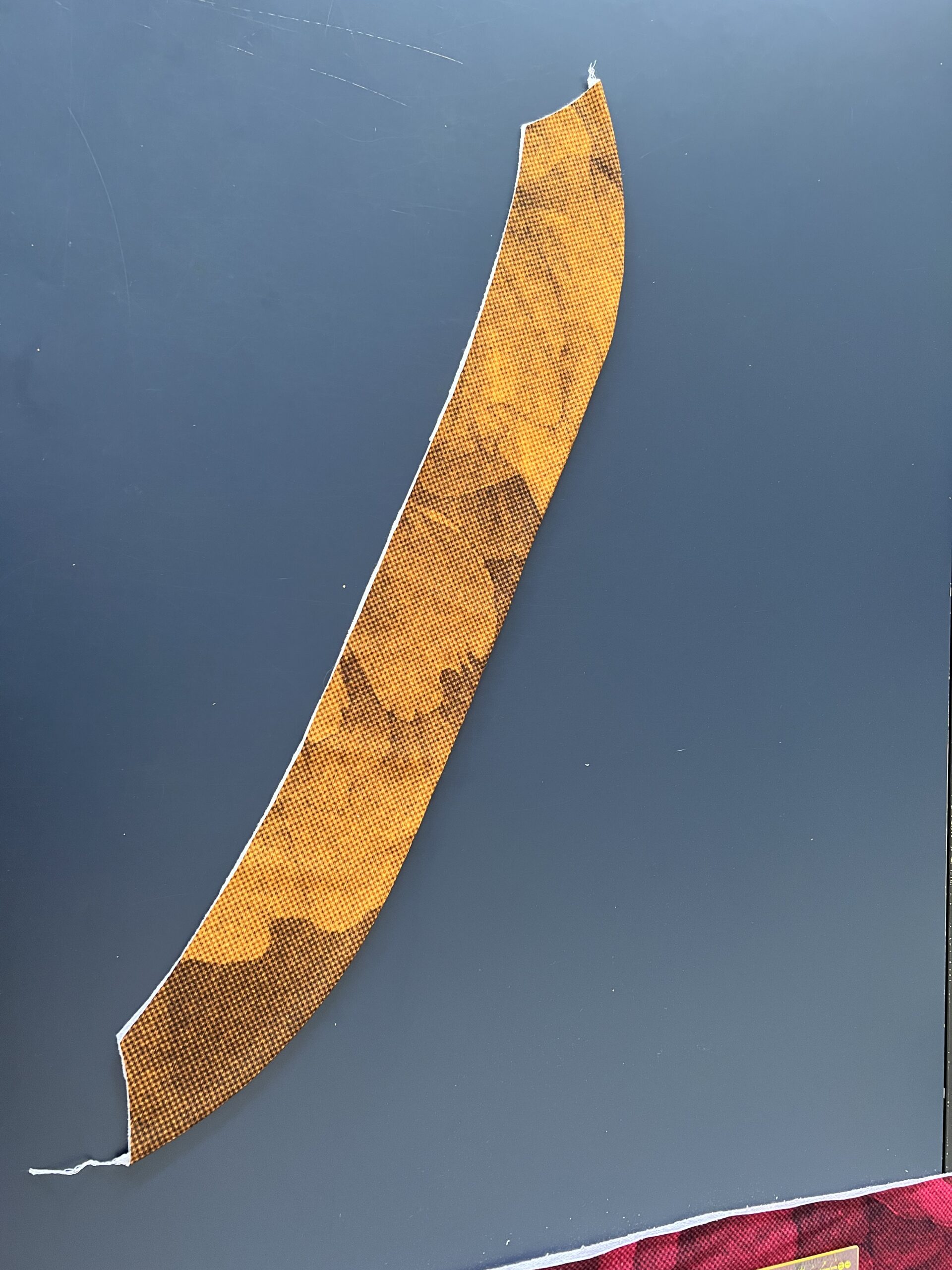
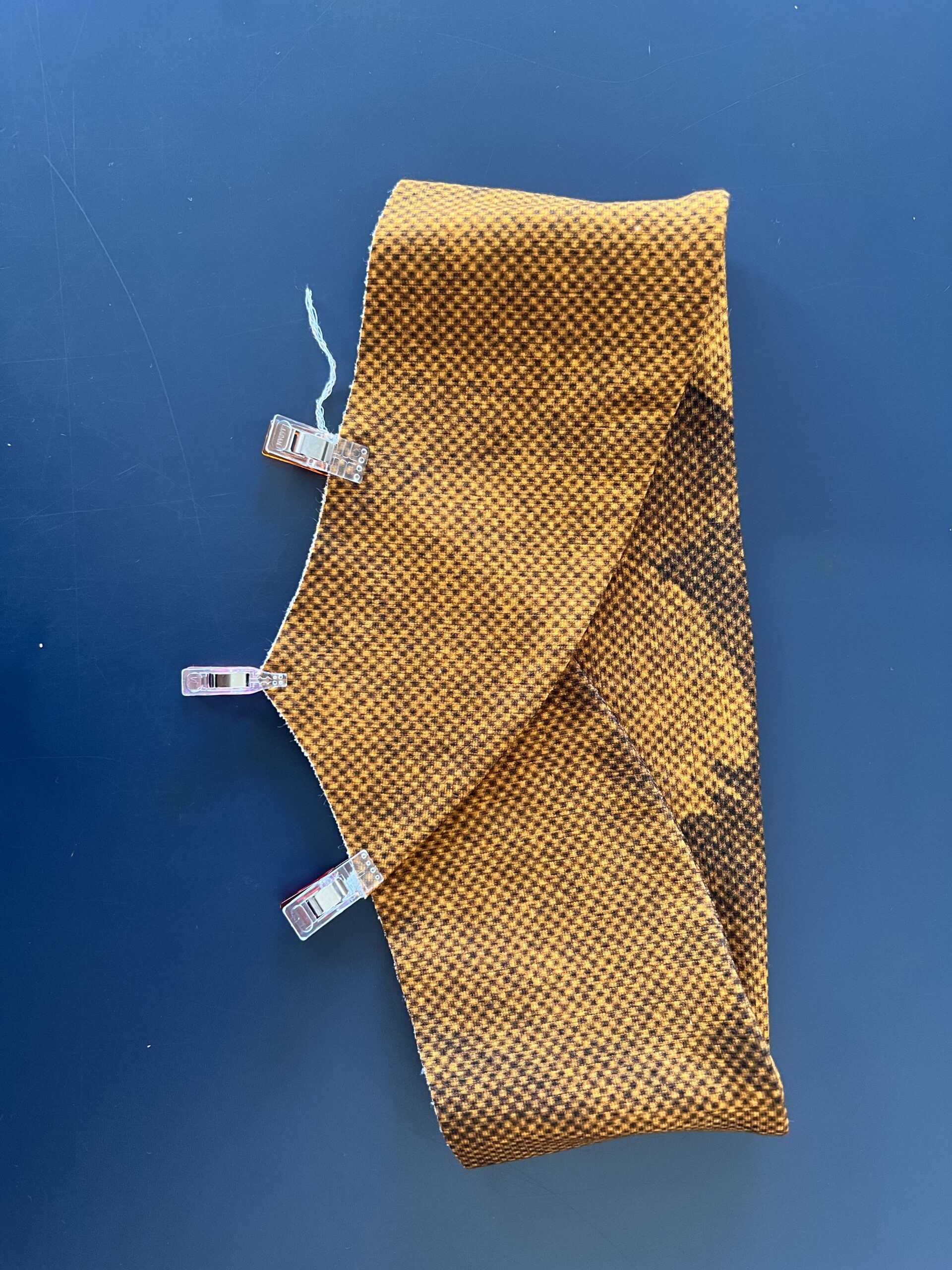
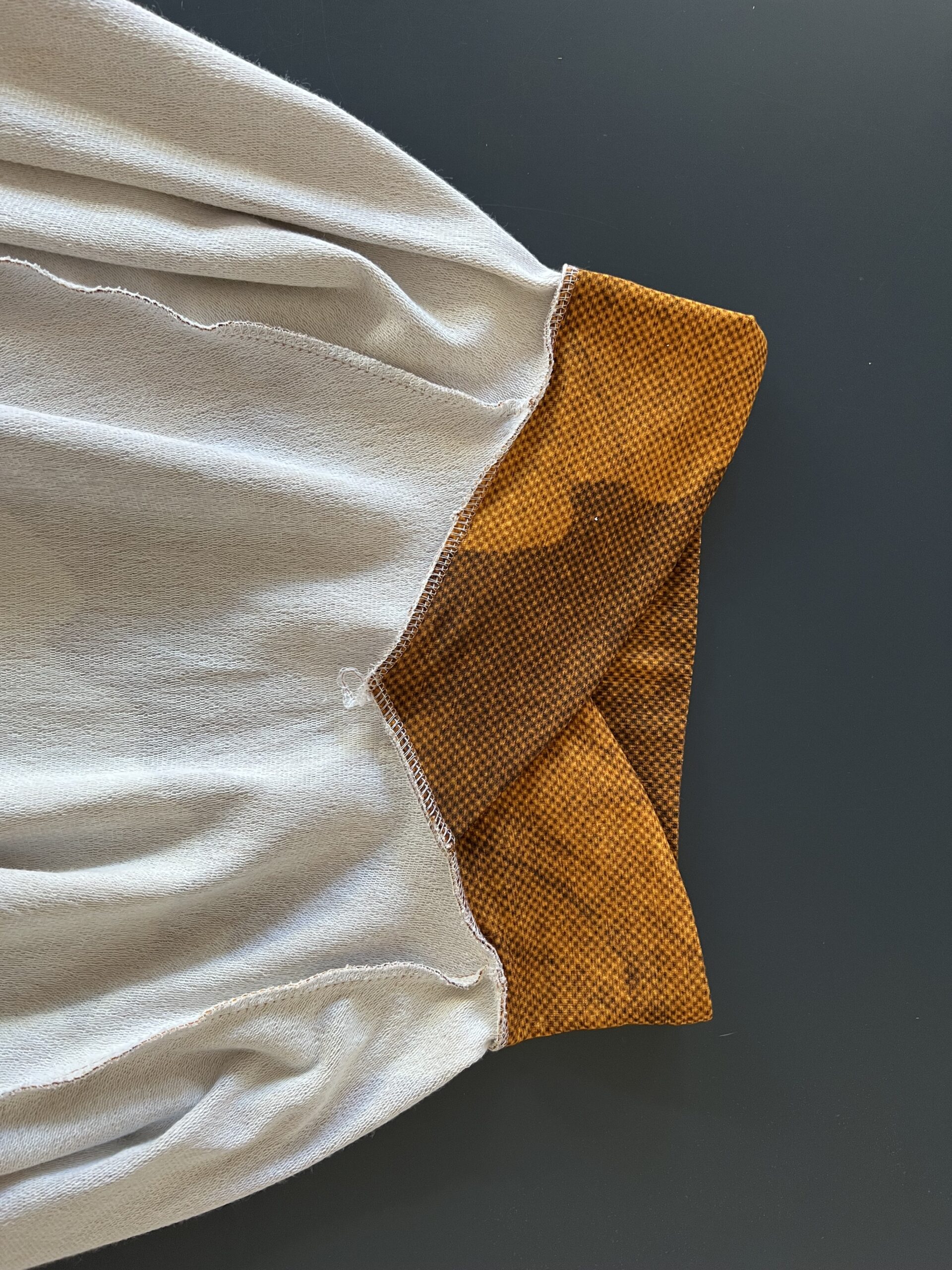
Kragen nähen
Stecke die 2 Kragenteile rechts auf rechts zusammen und nähe mit einem elastischen Stich.
Wende den Kragen auf rechts, bügle ihn gründlich und steppe optional knappkantig ab.
Der Kragen überlappt an der vorderen Mitte. Orientiere dich an den Knipsen (einer für die Überlappung, einer für die Schulternaht) und stecke den Kragen rechts auf rechts an dein Kleid. Nähe mit einem elastischen Stich.
Sewing the collar
Pin the 2 collar pieces right sides together and sew with an elastic stitch.
Turn the collar right side out, iron it thoroughly and optionally topstitch close to the edge.
The collar overlaps at the center front. Use the snaps as a guide (one for the overlap, one for the shoulder seam) and pin the collar onto your dress, right sides together. Sew with an elastic stitch.

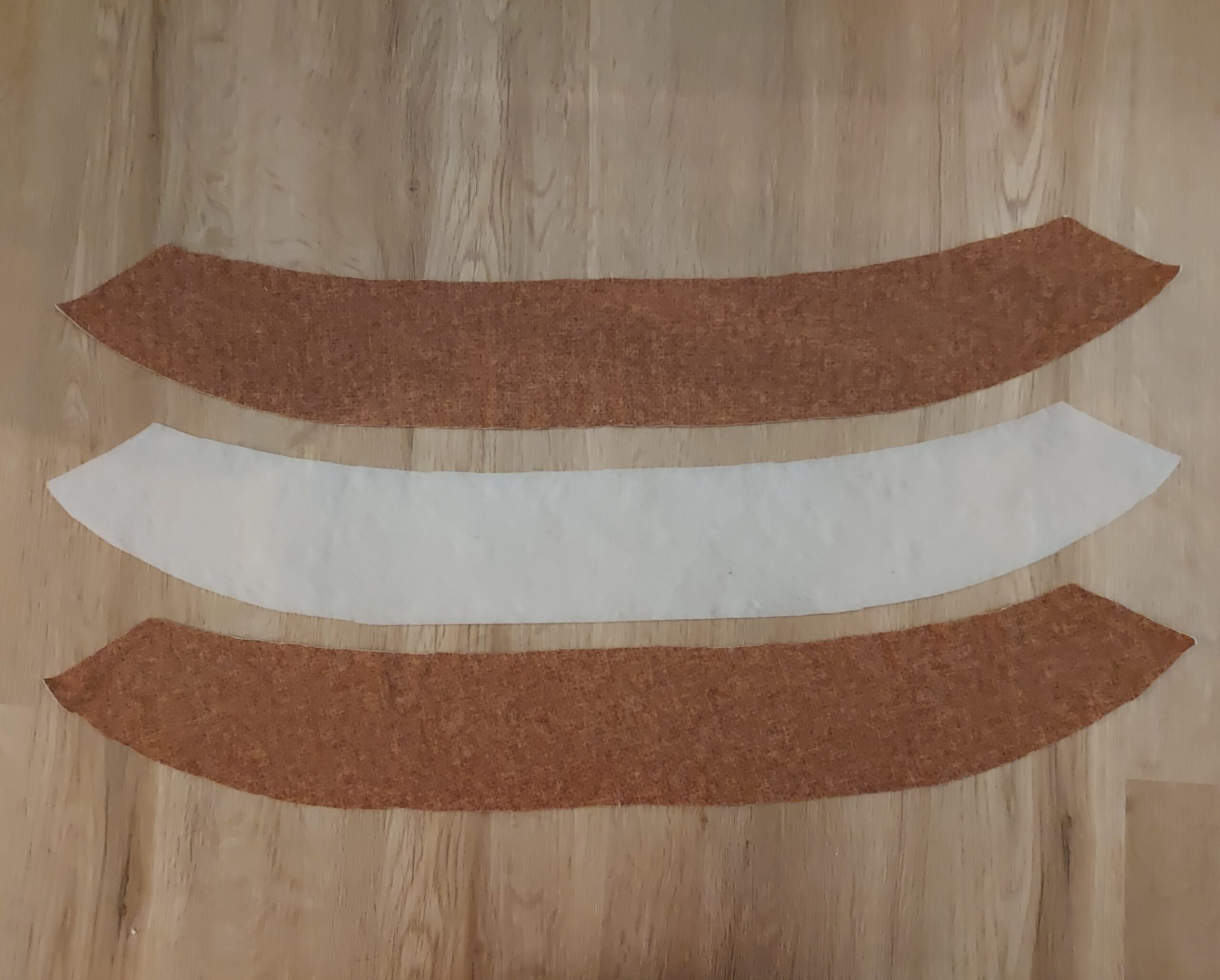
Option: verstärkter Kragen
Optional kannst du den Kragen deiner Halley verstärkt nähen. Nutze dafür Volumenvlies zum Aufbügeln, zum Beispiel H630.
Schneide zusätzlich zu den 2 Kragenteilen einmal ein Stück aus Volumenvlies ohne Nahtzugabe zu. Bügle das Vlies nach Anleitung auf die linke Stoffseite und nähe den Kragen wie gewohnt. Er hat durch das Vlies einen schönen Stand.
Option: Standing Collar
Optionally, you can sew the collar of your Halley reinforced. Use volume fleece to iron on, for example H630.
In addition to the 2 collar parts, cut a piece of fleece without a seam allowance. Iron the fleece to the wrong side of the fabric according to the instructions and sew the collar as usual. It has a nice stand thanks to the fleece.

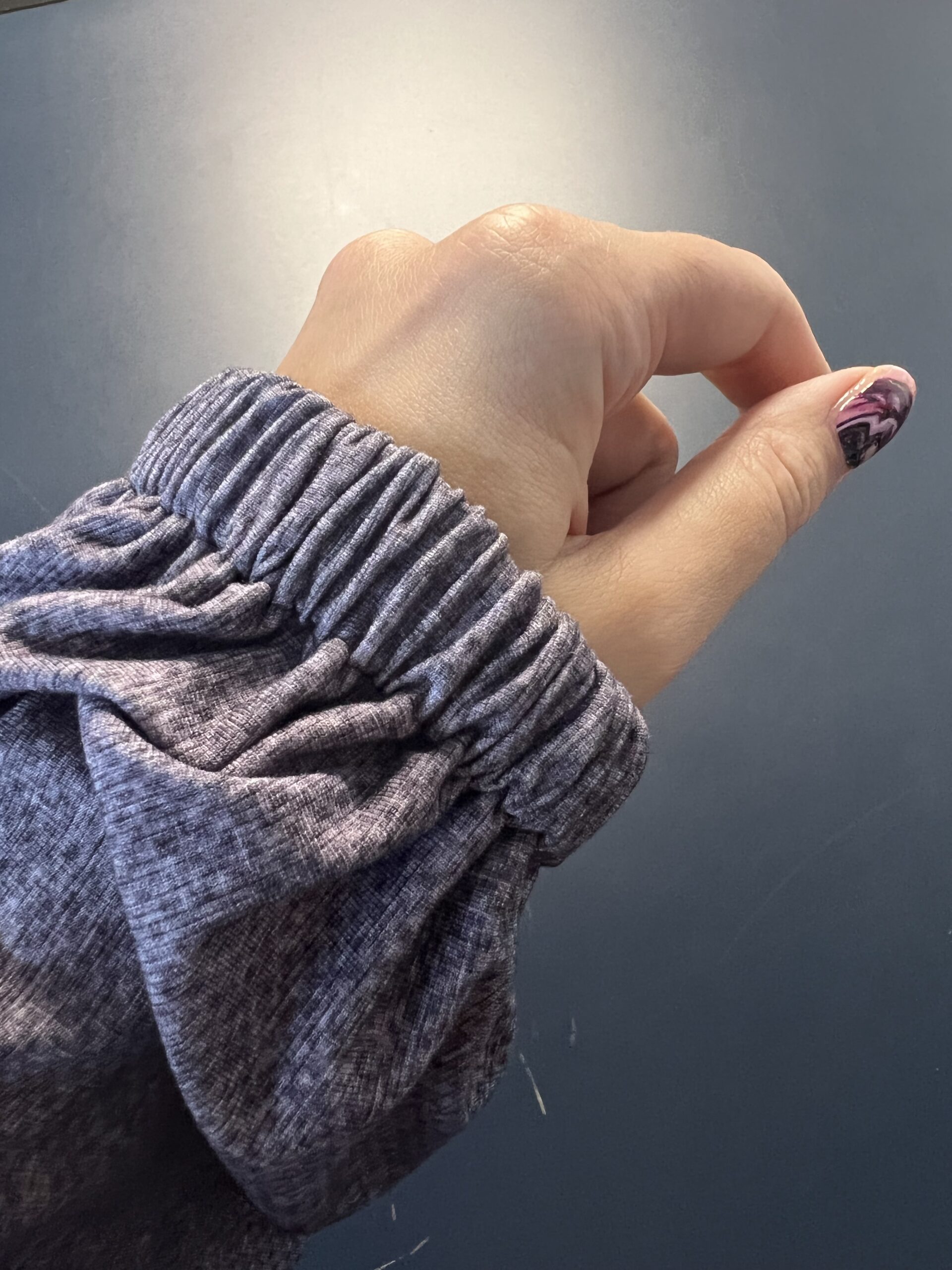
Weite Ärmel säumen
Versäubere die Ärmelsaumkante optional mit der Overlock. Klappe den Saum 2,5 cm um und nähe ihn bis auf eine kleine Öffnung zum einziehen des Gummis zu. Ziehe mit Hilfe einer Sicherheitsnadel ein 2 cm breites Gummiband ein. Probiere das Kleid an und schneide das Gummi in deiner Wohlfühllänge zu. Das Gummibündchen sollte am Handgelenk anliegen, aber nicht zu eng sein, da es sonst beim Tragen unbequem wird.
Hem the wide sleeves
Optionally finish the sleeve hem edge with the serger. Fold the hem 2,5 cm and sew, leaving a small opening for the elastic to pass through. Using a safety pin, pull in a 2 cm elastic band. Try on the dress and cut the elastic to your comfortable length. The elastic cuff should fit the wrist but not be too tight, otherwise it will be uncomfortable to wear.

Säumen
Säume den Saum von Kleid und Pulli mit 2,5 cm Saumzugabe, die engen Ärmel mit 2,5 cm Saumzugabe mit einem elastischen Stich oder einer Zwillingsnadel.
Hem
Hem the dress with a 2.5 cm hem allowance, the sleeves with 2,5 cm hem allowance with an elastic stitch or a twin needle.



























